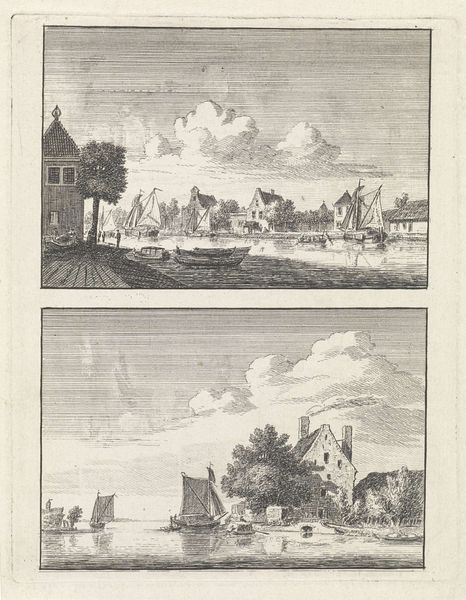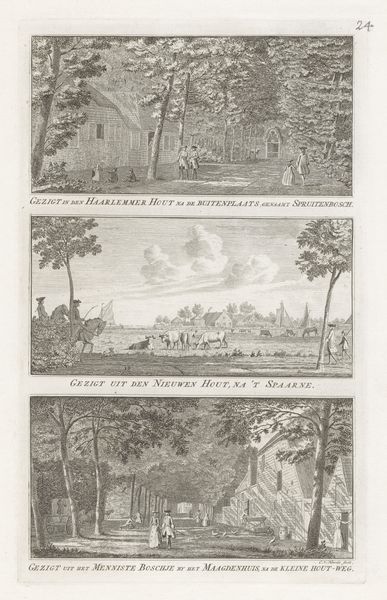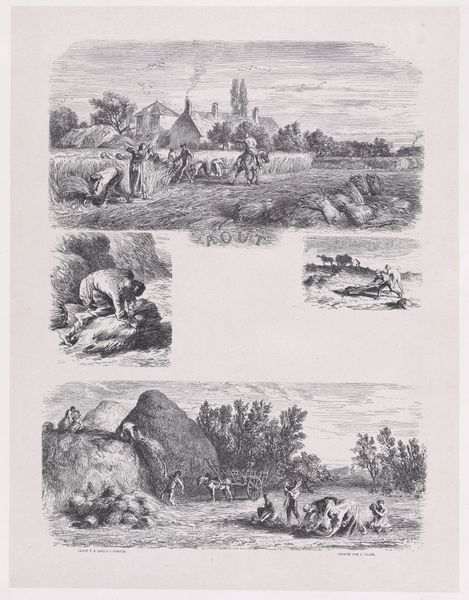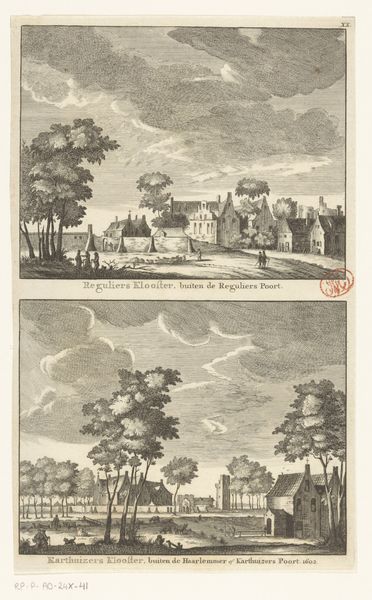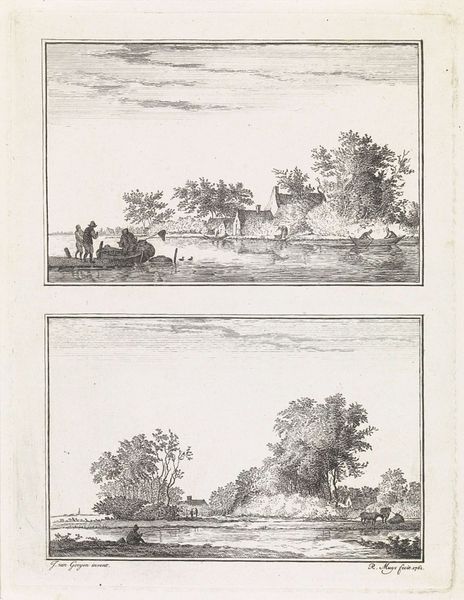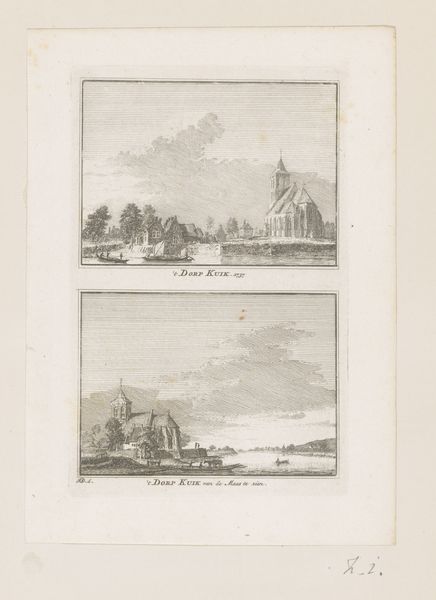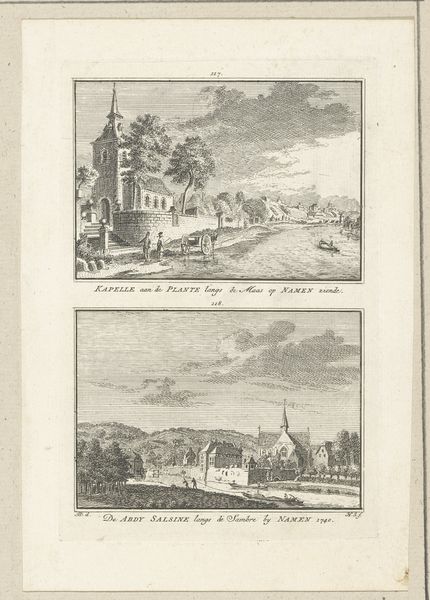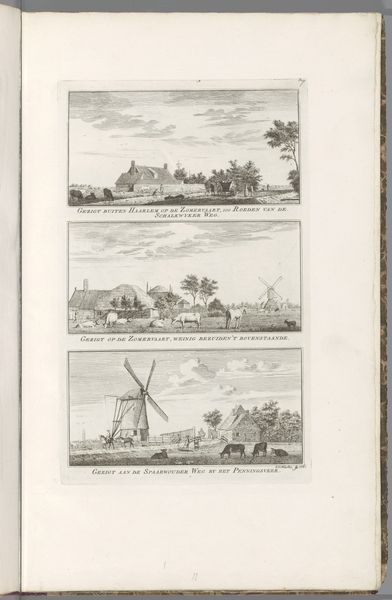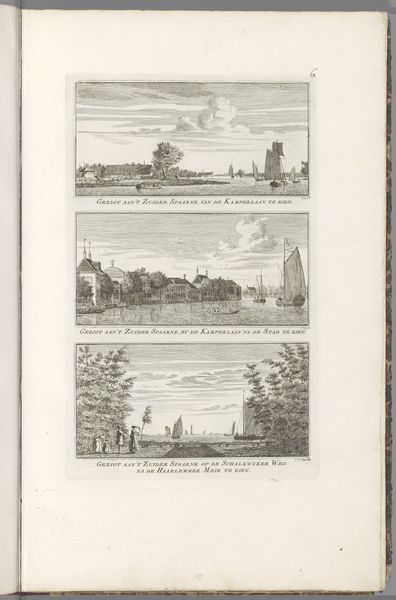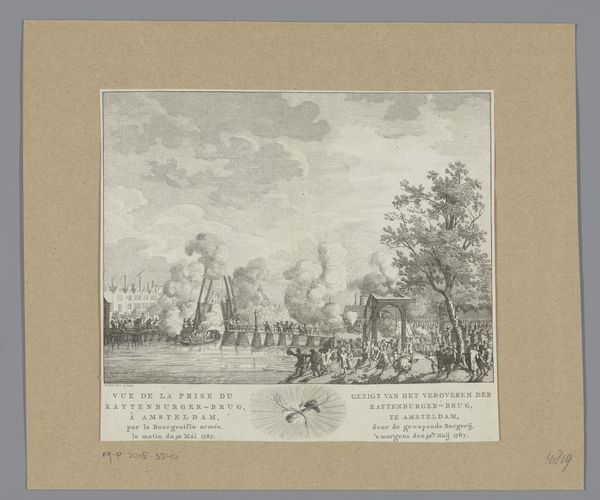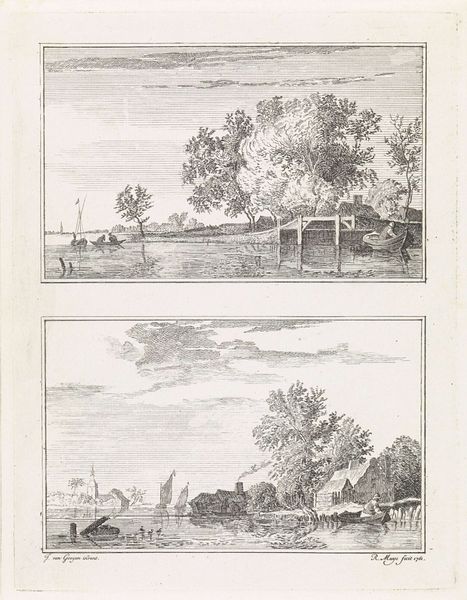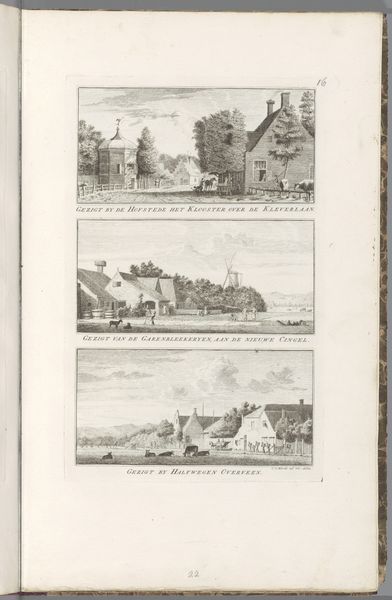
print, engraving
#
dutch-golden-age
# print
#
landscape
#
engraving
Dimensions: height 298 mm, width 184 mm
Copyright: Rijks Museum: Open Domain
Curator: Ah, look at this fascinating print, “Landschappen rond Haarlem bij Schoten en Overton” by Cornelis van Noorde, dating from 1763. It's a Dutch landscape, a set of three scenes stacked one atop the other, all rendered with such fine engraving. Editor: It gives me this strange feeling…almost claustrophobic, even though they’re supposed to be wide-open landscapes. Perhaps because they are separate images contained within the borders? The busyness of the detail, the almost feverish intensity of the lines…makes my heart race. Curator: I understand your response. Van Noorde was indeed working within a specific artistic and social framework. During this period, prints like these served as a sort of visual record, documenting the Dutch countryside and its burgeoning prosperity. This was a time when country estates were being built around cities, the wealthy moving from commerce to lifestyles emulating aristocrats, but documenting those lands became something of a cultural statement of pride. Editor: So, less about the land itself, the cows and clouds, and more about this shift in societal structure, with all this implies for what is and is not deemed appropriate as a representation. So are these picturesque idylls somewhat fabricated? Are the animals carefully placed to speak to land use and thus the economics? It's almost theatrical! I didn't realize an engraving of farmland could feel so... political. Curator: Absolutely. Engravings democratized imagery. No longer did ownership of beautiful land remain just within reach of the aristocracy. As prints became more ubiquitous, they could function as forms of currency—tangible reminders for social or commercial exchange among various interest groups across social spheres, while the artistic depiction reflected a desire for legitimization—or at least acceptance—into higher societal standing. Editor: Fascinating. Seeing them all together like this, each little scene perfectly ordered. Almost makes it feel less organic, more like someone meticulously categorizing the world. It’s like…before and after versions of success in land cultivation, displayed for everyone to see. The almost architectural rigidity, it feels very...intentional. Curator: Exactly. It reflects not just the appearance but also the social values associated with that landscape at the time. It tells a story about Dutch society on the brink of transformation through imagery intended for consumption both in domestic life or abroad, making the images ripe for different interpretations along lines of class status or cultural differences in what landscape meant within their culture. Editor: I come away looking at this print feeling a newfound understanding. I feel compelled to find even more landscape art that serves a social commentary more than capturing scenic places! Curator: It gives you, doesn't it?
Comments
No comments
Be the first to comment and join the conversation on the ultimate creative platform.
